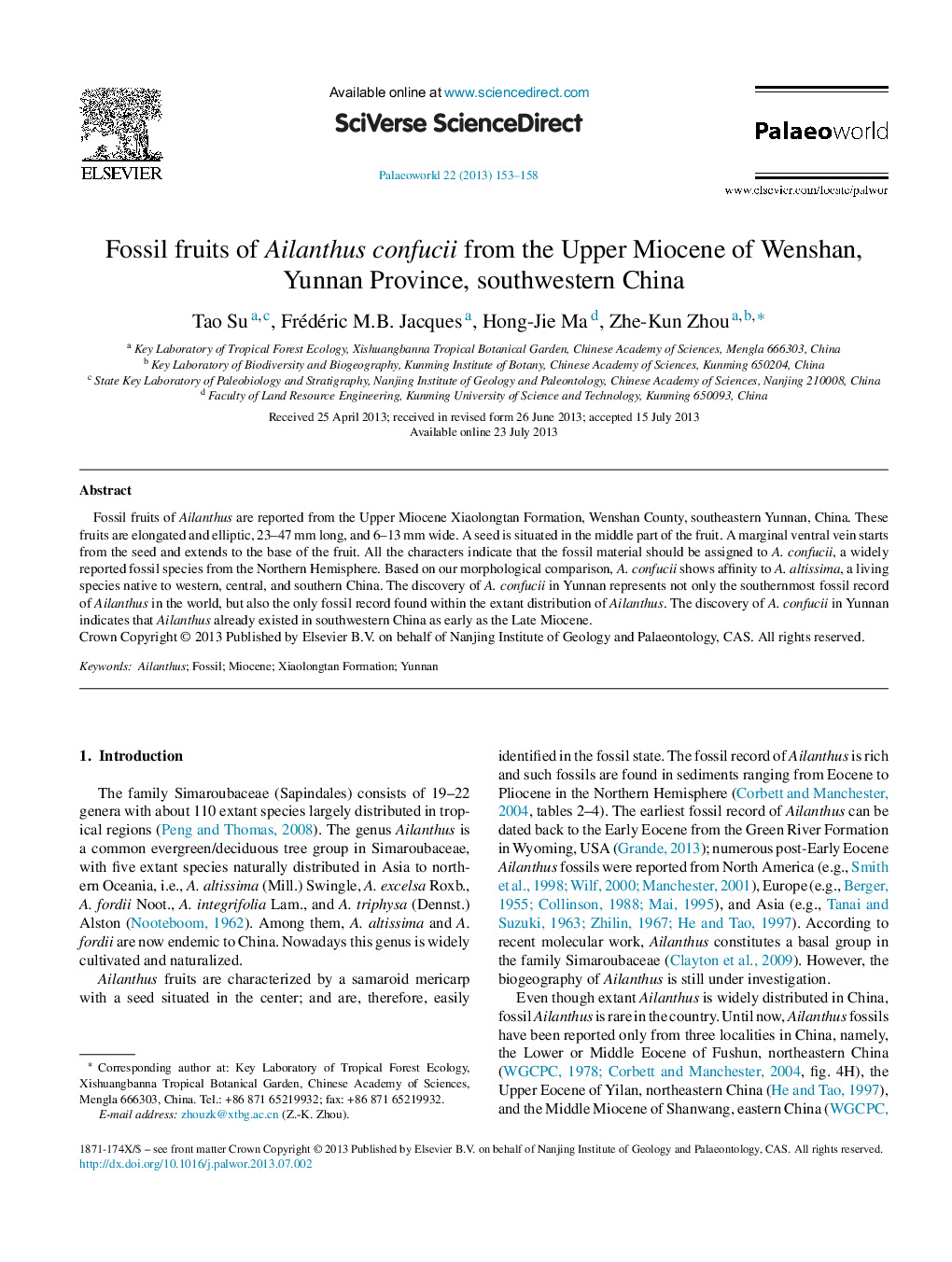| Article ID | Journal | Published Year | Pages | File Type |
|---|---|---|---|---|
| 4749693 | Palaeoworld | 2013 | 6 Pages |
Fossil fruits of Ailanthus are reported from the Upper Miocene Xiaolongtan Formation, Wenshan County, southeastern Yunnan, China. These fruits are elongated and elliptic, 23–47 mm long, and 6–13 mm wide. A seed is situated in the middle part of the fruit. A marginal ventral vein starts from the seed and extends to the base of the fruit. All the characters indicate that the fossil material should be assigned to A. confucii, a widely reported fossil species from the Northern Hemisphere. Based on our morphological comparison, A. confucii shows affinity to A. altissima, a living species native to western, central, and southern China. The discovery of A. confucii in Yunnan represents not only the southernmost fossil record of Ailanthus in the world, but also the only fossil record found within the extant distribution of Ailanthus. The discovery of A. confucii in Yunnan indicates that Ailanthus already existed in southwestern China as early as the Late Miocene.
